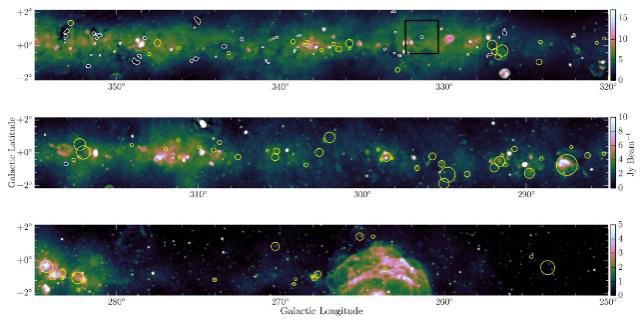Galactic Interstellar Medium and Cosmic Ray
The SCIENCE Journal announced the top 10 scientific breakthroughs in 2013, one of which “Cosmic Ray (CR) can trace back to the explosive remnants of supernova”, as the only major achievement in fields of Astronomy and Physics, opens a window to answer the origin of Galactic CRs. We are committed to the use of existing first-class astronomical equipment and the large scientific infrastructure under construction (SKA, LHAASO etc) to carry out in-depth research related with CRs. Our main research interests include:
1.Study of SNRs by using multi-band data (radio, optical, X-Ray and GeV-TeV data).
2.LHASSO observation to the energy spectra of rare SNRs by combining with Multi-Band data to research on the origin of Galactic CR; Radio observation of Very-High-Energy SNRs to study the characteristics of the Galactic CRs.
3.Study of the structure of Galaxy by taking advantage of ISM (SNRs, PNe and HII regions etc.).
4.Magnetic-fluid Simulation of supernova remnants.
The study of "New Discovery and distance measurements of SNRs " won an award of “the top 10 astronomical advances in China in 2008”.

The 1420 MHz image (grey) of SNR G353.6-0.7 with ROSAT image (red) and HESS image contours (green) overlaid. The observations from the radio, X-ray, andγ-ray all indicate that SNR G353.6-0.7 is the counterpart of a rare TeV γ-Ray source HESS J1731-347 (see detail: Tian W.W. et al. 2008, ApJL,679, 85)

A portion of the Galactic plane at 88 MHz with a bandwidth of 30.72 MHz observed by the MWA, the white polygons and yellow circles show the HⅡ regions with detected and undetected absorption features, respectively (Su H.Q. et al. 2018, MNRAS, 479, 4041)